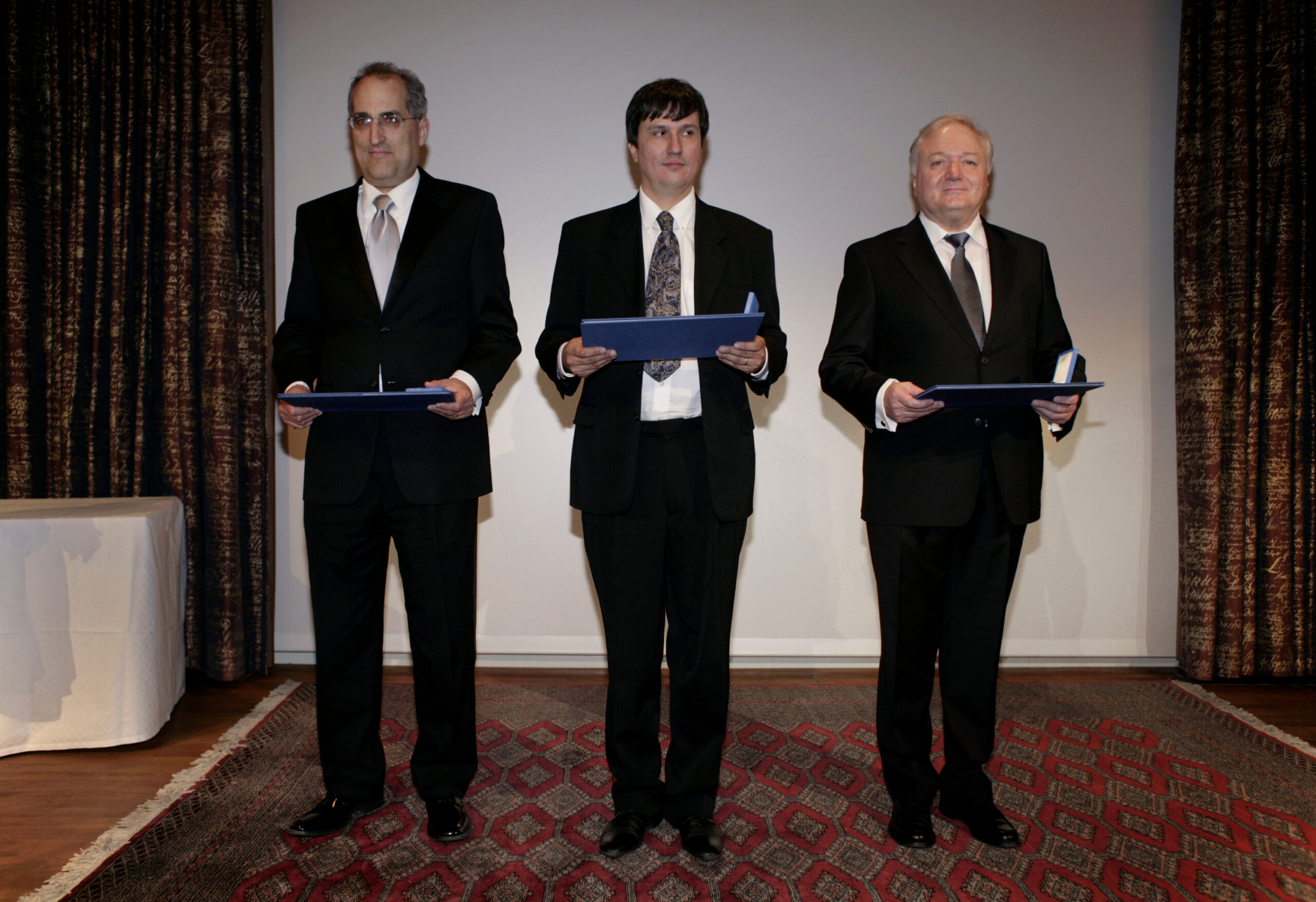The Royal Swedish Academy of Sciences has decided to award the Crafoord Prize in Mathematics and Astronomy 2008 with one half (mathematics) jointly to Maxim Kontsevich, Institut des Hautes Études Scientifiques (IHÉS), Bures-sur-Yvette, France, and Edward Witten, Institute for Advanced Study, Princeton, NJ, USA, “for their important contributions to mathematics inspired by modern theoretical physics”, and the other half (astronomy) to Rashid Alievich Sunyaev, Space Research Institute (IKI) of the Russian Academy of Sciences, Moscow, Russia and Max Planck Institute for Astrophysics, Garching, Germany, “for his decisive contributions to high-energy astrophysics and cosmology, in particular processes and dynamics around black holes and neutron stars and demonstration of the diagnostic power of structures in the background radiation”.
Cross-disciplinary mathematics and the extreme Universe
This year´s Crafoord Prize combines abstract mathematics and astrophysics. It is being awarded for mathematical discoveries that are significant for the fundamental laws of nature and for research on black holes and the early Universe.
Mathematics
The laureates in mathematics, the mathematician Maxim Kontsevich and the theoretical physicist Edward Witten, have used the methodology of physics to develop a revolutionary new mathematics intended for the study of various types of geometrical objects. Their work is not only of great interest in the discipline of mathematics but may also find applications in totally different areas. Its results are of considerable value for physics and research into the fundamental laws of nature. According to string theory, which is an ambitious attempt to formulate a theory for all the natural forces, the smallest particles of which the Universe is composed are vibrating strings. This theory predicts the existence of additional dimensions and requires very advanced mathematics. The laureates have resolved several important mathematical problems related to string theory and have in this way paved the way for its further development.
Astronomy
The laureate in astronomy, Rashid Sunyaev, has studied the most extreme processes in the Universe and developed theoretical models of how black holes devour matter and the origin of the structure of the cosmological background radiation. His description of how matter drawn towards a black hole forms a thin, rapidly rotating disc is essential if we are to understand how black holes can be the most powerful sources of radiation in the Universe. Sunyaev´s work with the cosmological background radiation has inspired measurements that provide clues to the creation and structure of the Universe. This radiation derives from a period when the Universe was only a few hundred thousand years old and contains information about what happened during Big Bang. On its journey to us it has also been influenced by the distribution of matter in clusters of galaxies billions of years later.
Maxim Kontsevich, Russian and French citizen. Born 1964 in Khimki, Russia. Ph.D. in mathematics 1992 at University of Bonn, Germany. Professor at Institut des Hautes Études Scientifiques (IHÉS), Bures-sur-Yvette, France.
www.ihes.fr/IHES-A/People/pers-scienA.html
Edward Witten, American citizen. Born 1951 in Baltimore, MD, USA. Ph.D. in physics 1976 at Princeton University, NJ, USA. Charles Simonyi Professor at School of Natural Sciences, Institute for Advanced Study, Princeton, NJ, USA.
www.sns.ias.edu/~witten
Rashid Alievich Sunyaev, Russian citizen. Born 1943 in Tashkent, Uzbekistan. Ph.D. in astrophysics 1968 at Moscow University, Russia. Head of the Department of High Energy Astrophysics, Space Research Institute (IKI), Russian Academy of Sciences, Moscow, Russia. Director of Max Planck Institute for Astrophysics, Garching, Germany.
http://hea.iki.rssi.ru, www.mpa-garching.mpg.de/~sunyaev
Prize amount:
USD 500,000. Kontsevich and Witten are awarded one half and Sunyaev the other half.
This prize-awarding ceremony will take place at the Academy in Stockholm on 23 April 2008 in the presence of H.M. the King.

